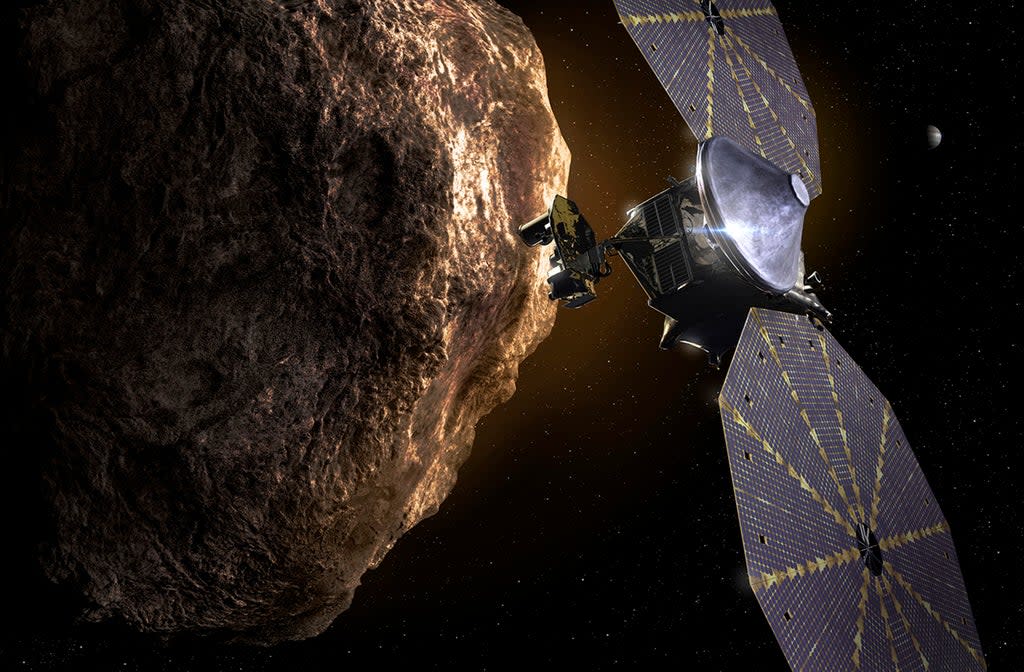Lucy mission: Enormous solar panel on Jupiter asteroid craft may not be properly attached, Nasa says

A solar array on Nasa’s Lucy spacecraft may not be fully latched, Nasa has said, leading to the space agency investigating the issue.
Lucy will study two large clusters of space rocks that share an orbit around the Sun with Jupiter, which scientists believe are remnants of primordial material that formed the solar system’s outer planets.
Its path will circle back to Earth three times for gravity assists, making it the first spacecraft ever to return to our planet’s vicinity from the outer solar system.
However, it is possible that the mission may not go smoothly; “Lucy’s two solar arrays have deployed, and both are producing power and the battery is charging. While one of the arrays has latched, indications are that the second array may not be fully latched”, Nasa said in a statement.
“In the current spacecraft attitude, Lucy can continue to operate with no threat to its health and safety. The team is analysing spacecraft data to understand the situation and determine next steps to achieve full deployment of the solar array.”
The solar arrays have 51 square metres of solar cells in order to travel to Jupiter, where the light from the Sun will be weaker than it is on earth. Lockheed Martin Space was the prime contractor for the craft, although the arrays were built by Northrop Grumman.
“This particular design really enables us to stow up closely and tightly next to the spacecraft for launch,” Katie Oakman, Lucy structures and mechanisms lead at Lockheed Martin Space, reportedly said at a briefing on 14 October.
“Having any particular shape other than this really unique design wouldn’t enable us to get to that 51-meter-squared of active cell area and still fit within the launch vehicle fairing.”
Nasa associate administrator Dr. Thomas Zurbuchen tweeted that the “team has overcome many challenges already and I am confident they will prevail here as well” – although it is unclear what would happen to the mission should the solar array cannot be secured.
Nasa did not respond to a request for more information from The Independent before time of publication.
Read More
China unveils lineup for next space mission, including first female astronaut
Blue Origin launches William Shatner into space – as it happened

 Yahoo News
Yahoo News 
